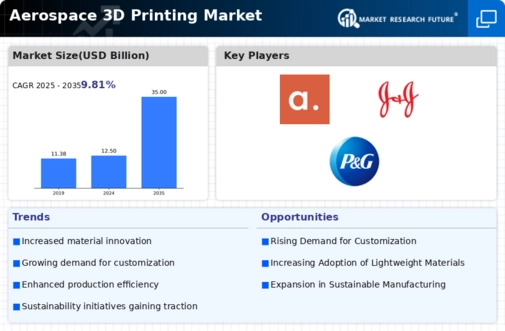Market Share
Aerospace 3D Printing Market Share Analysis
The Aerospace 3D Printing market is a dynamic sector witnessing rapid technological advancements and evolving consumer demands. Market share positioning strategies play a pivotal role in shaping the competitive landscape of this industry. Companies operating in the Aerospace 3D Printing market are strategically positioning themselves to gain a competitive edge and capture a substantial market share.
One prominent strategy employed by key players is technological innovation. In an industry driven by cutting-edge technology, companies are investing heavily in research and development to enhance their 3D printing capabilities. This includes the development of advanced materials, precision printing techniques, and the incorporation of artificial intelligence for process optimization. By staying at the forefront of technological advancements, companies aim to differentiate themselves and attract a larger customer base.
Collaboration and partnerships are another key aspect of market share positioning in the Aerospace 3D Printing market. As the industry becomes more complex, companies are realizing the importance of forming strategic alliances to leverage complementary strengths. Collaborations with aerospace giants, research institutions, and other stakeholders enable companies to access a broader pool of resources, expertise, and market insights. Such partnerships not only enhance product development but also provide a platform for shared innovation, reducing time-to-market for new solutions.
Furthermore, customization and flexibility have become crucial elements in market positioning. Aerospace 3D printing allows for intricate designs and the production of highly customized components. Companies are leveraging this capability to cater to the unique requirements of their clients, offering tailor-made solutions for specific aerospace applications. By providing flexibility in design and manufacturing, companies can attract customers looking for personalized and optimized aerospace components.
Cost efficiency is a significant driver in the Aerospace 3D Printing market, and companies are adopting strategies to enhance their cost competitiveness. Economies of scale and process optimization are being explored to reduce production costs without compromising on quality. This cost-conscious approach enables companies to offer competitive pricing, making their products more appealing to a wider range of customers. Additionally, some companies are exploring sustainable practices to not only reduce costs but also align with the growing demand for environmentally friendly solutions in the aerospace industry.
Market penetration is another strategy employed by companies seeking to expand their market share. This involves targeting new customer segments or entering untapped geographical markets. Companies are conducting thorough market research to identify emerging opportunities and establish a strong presence in regions with high growth potential. Through targeted marketing and distribution strategies, companies aim to capture the attention of potential customers and gain a foothold in new markets.







Leave a Comment